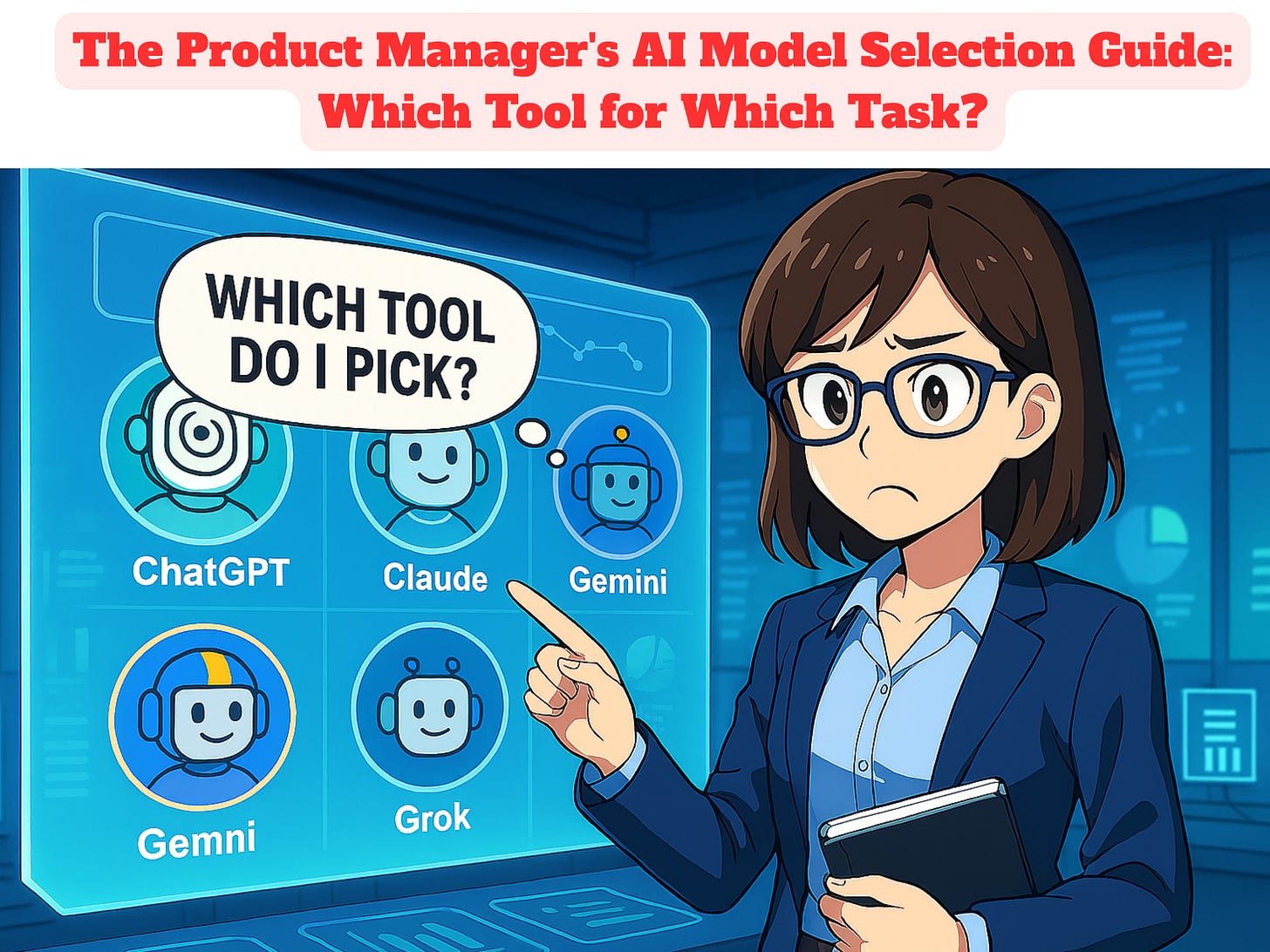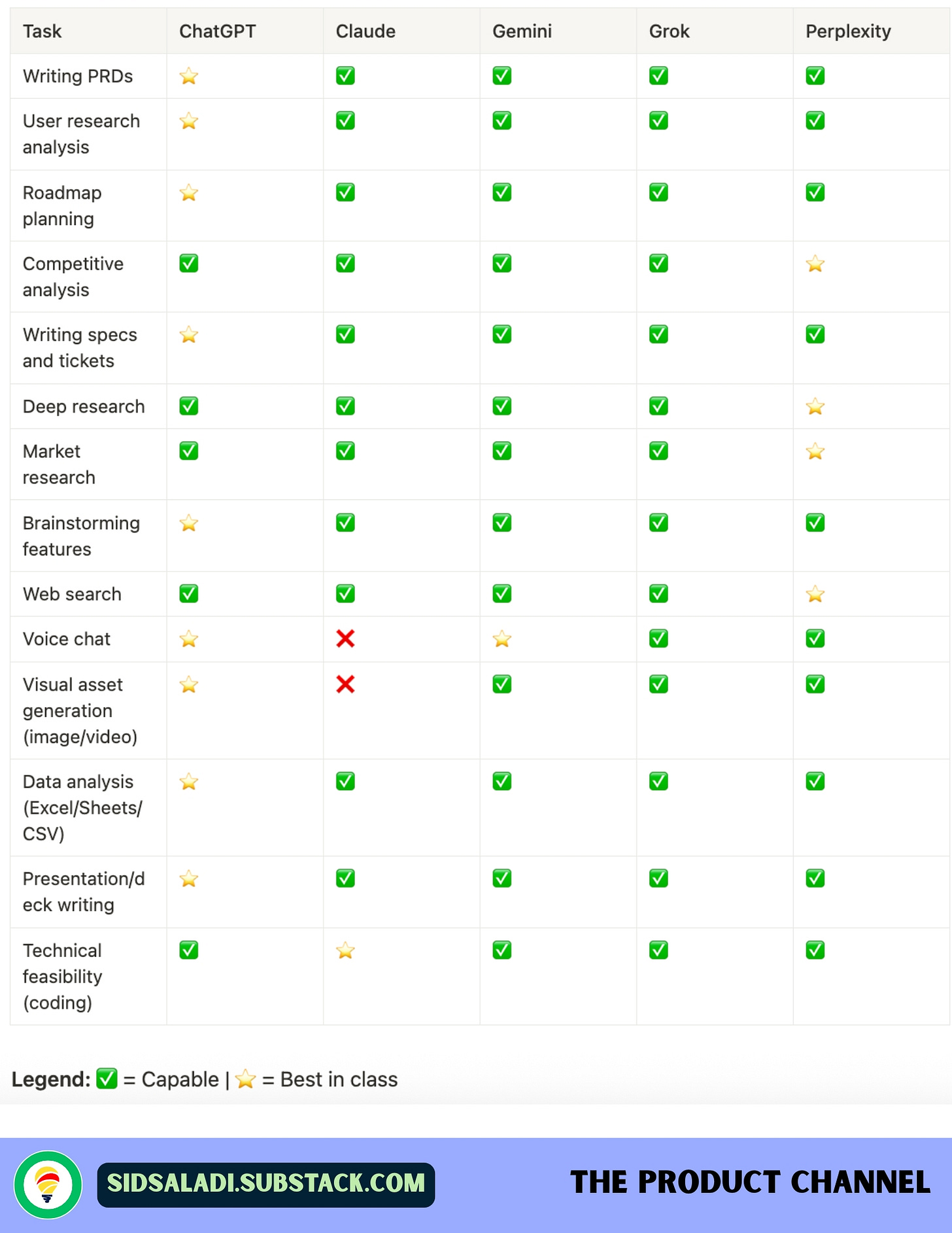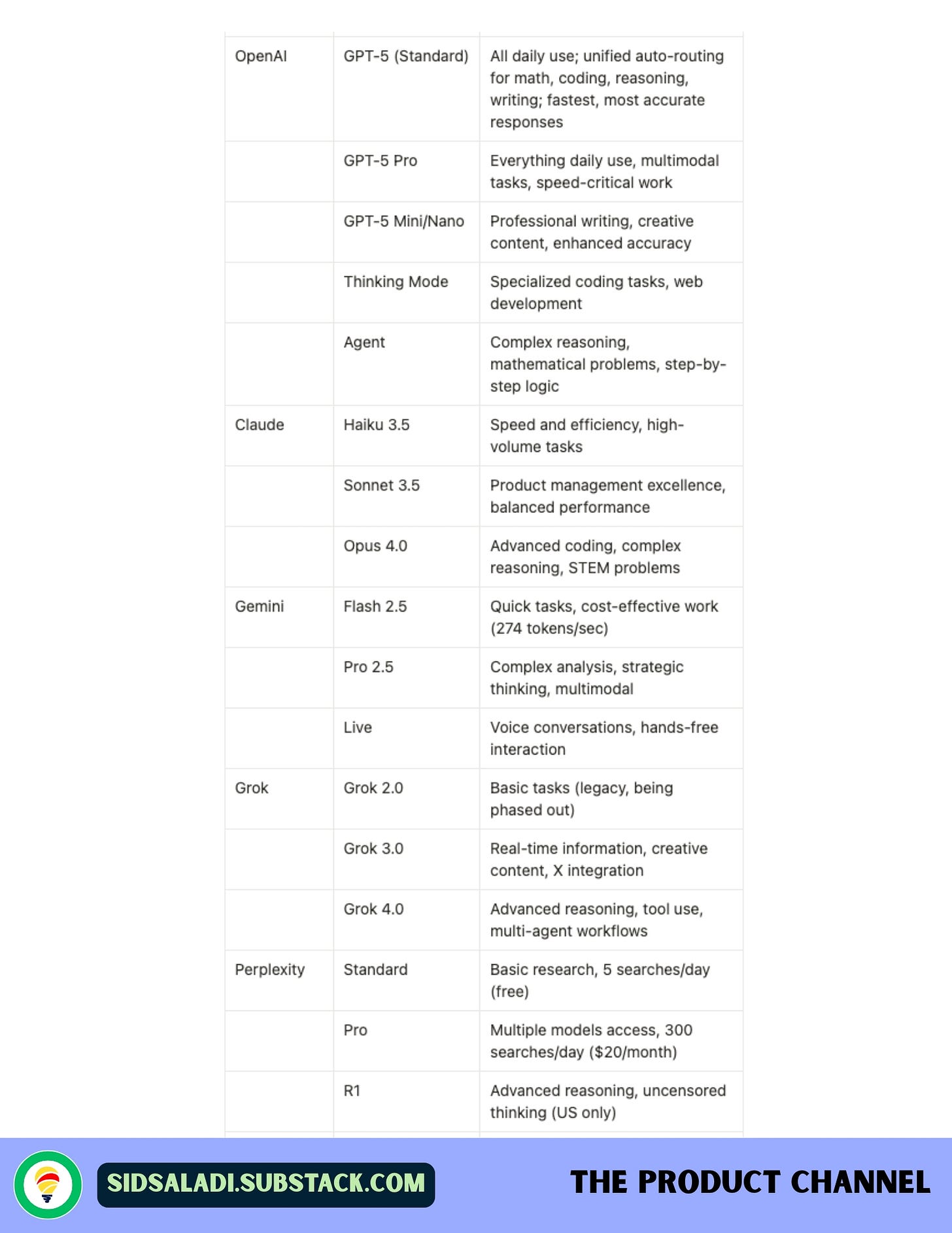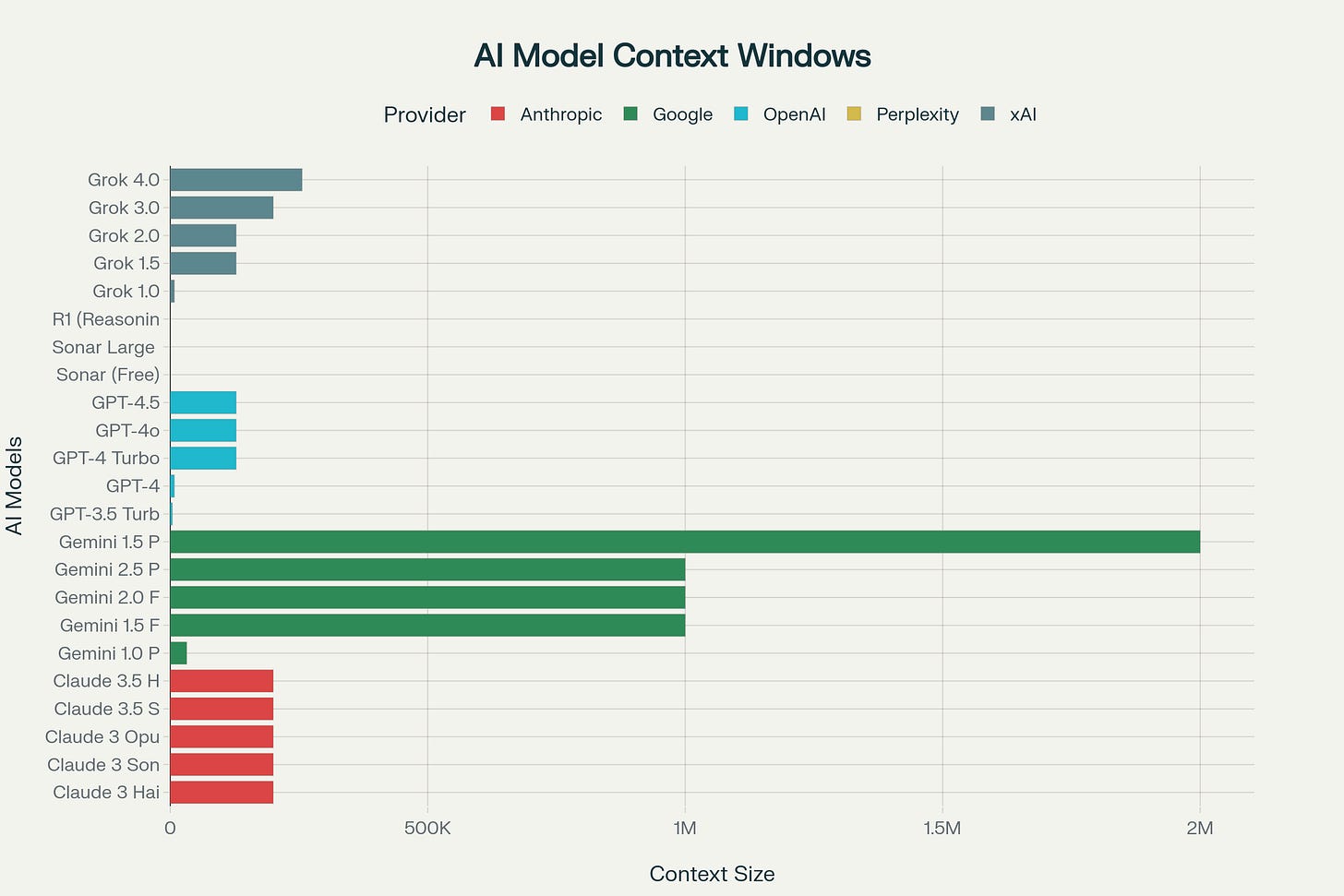The Product Manager's AI Model Selection Guide: Which Tool for Which Task? 🤖
I've spent $4,000+ testing every AI model so you don't have to."
Here's the brutal truth: Most product managers are still guessing which AI tool to use for what task.
I see it every day. PMs jumping between ChatGPT, Claude, and Gemini without any strategy. Using Opus for quick tasks that Flash could handle in seconds. Burning budget on premium models when the free tier would work perfectly.
Let me save you 18 months of expensive trial and error. 💸
The Problem Every PM Faces 🎯
You know AI can help with PRDs, research, and roadmaps. But which model? Which version? For which specific task?
I've been there. Started with ChatGPT for everything. Then discovered Claude's analytical superpowers. Got seduced by Gemini's speed. Almost went broke testing every new model that launched.
Here's what I learned: The best AI strategy isn't about finding one perfect tool. It's about building the right toolkit.
Your AI Toolkit Breakdown 📊
After 18 months and way too much money spent, here's exactly what each tool excels at:
Key Model Recommendations by Provider
ChatGPT wins the long game for one simple reason: it actually remembers you. 🧠
While other models reset every conversation, ChatGPT builds context over weeks and months. It learns your work style, remembers your frameworks, and adapts to your preferences. No more re-explaining your methodology every session.
But here's where each model shines:
Claude 3.5 Sonnet → Your go-to for deep analysis and structured thinking
Gemini 2.5 Flash → Lightning fast and crazy cheap for high-volume work
Grok 3.0 → Real-time info and uncensored brainstorming
Perplexity Pro → Research powerhouse with proper citations
Think of it this way: ChatGPT is your main work partner. The others? Specialized consultants you call when you need their superpowers.
AI Version Selection Guide: Match the Tool to Your Task 🔍
Here's a practical guide to help you quickly pick the right version for specific product management tasks:
My Current AI Workflow ⚡
Monday morning strategy sessions: ChatGPT GPT-4o (remembers our product context)
Quick competitive research: Perplexity Pro (fast, cited sources)
Deep user research analysis or Data analysis: Claude Sonnet 3.5 with Claude MCP (analytical powerhouse that can connect to Google Drive, Notion, and other sources to perform deep research on actual user data)
Real-time market updates: Grok 4.0 (fresh data, no filters)
Complex technical feasibility: Claude Opus 4.0 (coding)
High volume document processing: Gemini 2.5 Pro (handles 1M token context window - equivalent to ~750,000 words or approximately 1,500 book pages)
Deep research with multimedia sources: Gemin 2.5 Pro Deep research (integrates Google's search index, processes YouTube videos, and synthesizes information from hundreds of sources simultaneously)
The Real Game Changer 🚀
ChatGPT still wins the long game because it actually remembers you. While other models reset every conversation, ChatGPT builds context over weeks and months.
But here's my pro tip: Use ChatGPT as your main work partner. The others? Specialized consultants you call when you need their superpowers.
Cost optimization hack: Start with the cheapest model that can handle your task. Only upgrade when you hit limitations.
The Bottom Line 💡
The best AI strategy isn't about finding the perfect model. It's about building the right toolkit and knowing when to use each tool.
Stop guessing. Start strategizing.
What's your biggest AI challenge right now? Picking the right model, managing costs, or something else entirely? Hit reply and let me know—I read every response.
Additional Resource - context windows
If you’re still guessing which model is best for your task, this chart is your wake-up call: context window size matters—a lot. Gemini’s monstrous 2M-token capacity lets you process entire books, while Claude and ChatGPT dominate for deep dives and daily work with context windows that fit real project workflows. Don’t just chase the biggest number; match your use case to the right AI—because picking the right model for the job is where product managers start beating the guessers.





